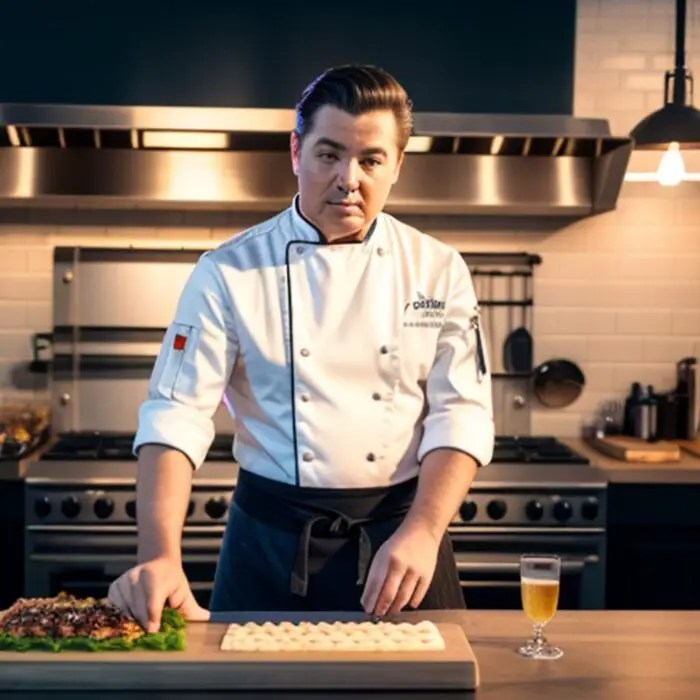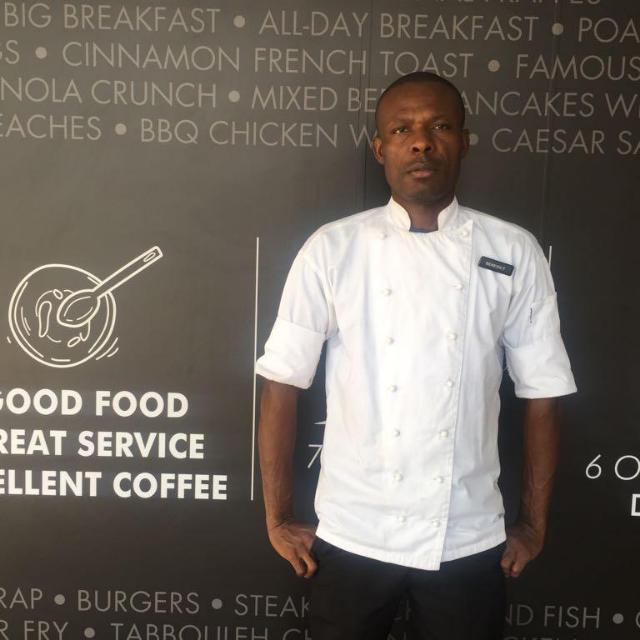
A chef in the kitchen.
Chef shows have become a staple of modern entertainment, captivating audiences with their blend of culinary expertise, drama, and artistry.
But what goes on behind the scenes to bring these visually stunning and emotionally engaging shows to life? Filming a chef show is a complex process that involves meticulous planning, a dedicated crew, and an understanding of both culinary and cinematic arts. Here’s a look at what it takes to film a chef’s show.
Introduction
The allure of chef shows lies in their ability to transport viewers into the kitchens of world-renowned chefs, offer a front-row seat to high-stakes culinary competitions, and showcase the journey of creating extraordinary dishes.
However, the seamless execution of these shows is the result of detailed production work and careful coordination. From pre-production to post-production, every step is crucial in delivering a captivating and authentic culinary experience to the audience.
Pre-Production: Setting the Stage
Concept Development
Every successful chef show starts with a strong concept. This involves brainstorming ideas, researching trends, and identifying unique angles that will captivate the audience.
Whether it’s a competition show, a documentary series, or a travelogue, the concept sets the tone and direction for the entire production.
Scriptwriting and Storyboarding
Once the concept is finalized, the next step is scriptwriting and storyboarding. While reality and competition shows may not follow a traditional script, they still require detailed outlines and storyboards to guide the filming process. This includes planning key scenes, interviews, and transitions to ensure a cohesive narrative.
Casting
Casting is a critical aspect of pre-production. Finding the right chefs, contestants, or hosts is essential for the show’s success.
Producers look for individuals with compelling stories, strong personalities, and exceptional culinary skills. Casting calls, auditions, and screen tests are common methods used to select the perfect candidates.
Production: Capturing the Magic
Setting Up the Kitchen
The kitchen is the heart of any chef show. Whether it’s a high-end restaurant, a makeshift competition kitchen, or a chef’s home, the set must be meticulously prepared.
This involves ensuring all equipment is in working order, arranging ingredients, and setting up camera angles to capture every detail.
Filming Techniques
Filming a chef’s show requires a mix of different techniques to capture the action, emotion, and intricacies of cooking. Here are some key methods used:
- Close-Up Shots: Essential for capturing the details of food preparation, from chopping vegetables to plating dishes.
- Wide Shots: Provide an overview of the kitchen and the chefs at work, helping to establish the scene.
- Interviews and Confessionals: Personal insights and reactions from chefs or contestants add depth to the narrative.
- Drone Footage: Often used in travel-based shows to capture stunning aerial views of locations.
Lighting and Sound
Proper lighting is crucial in a chef’s show to highlight the colors and textures of the food. Natural light is preferred, but studio lights are used to ensure consistency.
Sound quality is equally important; clear audio captures the sizzle of a pan, the chop of a knife, and the chef’s commentary, all of which enhance the viewer’s experience.
Crew Coordination
A well-coordinated crew is the backbone of any successful production. Directors, producers, camera operators, sound technicians, and culinary consultants must work seamlessly together.
Timing is everything in a chef show, and each crew member plays a vital role in capturing the perfect moments.
Post-Production: Polishing the Final Product
Editing
Editing is where the magic happens. Hours of raw footage are condensed into a cohesive and engaging episode. Editors select the best shots, add transitions, and ensure the narrative flows smoothly.
This stage also involves color correction and sound mixing to enhance the visual and auditory appeal.
Adding Graphics and Effects
Graphics and effects add a professional touch to the show. This includes on-screen text for recipes, timers in competition shows, and visual effects that highlight key ingredients or techniques. These elements help keep the audience informed and engaged.
Music and Sound Design
The right soundtrack can elevate a chef’s show, adding excitement, tension, or emotional depth. Sound designers carefully select music and sound effects that complement the visuals and enhance the storytelling.
FAQ: Behind The Show: What It Takes To Film A Chef Show
1. How long does it take to film a chef’s show?
The time required to film a chef’s show varies depending on the show’s format and complexity. It can take anywhere from a few weeks to several months.
2. Do chefs get to prepare in advance for their dishes?
It depends on the show’s format. In competition shows, chefs often have limited time and resources, while in documentary-style shows, they may have more time to prepare and plan their dishes.
3. How many people are involved in the production of a chef’s show?
A typical production crew for a chef show can range from a small team of 10-20 people to a large crew of over 100, depending on the scale of the production.
4. Are the ingredients and equipment provided for the chefs?
Yes, most shows provide the necessary ingredients and equipment. However, chefs may bring their tools or special ingredients in some cases.
5. What happens if something goes wrong during filming?
Contingencies are always in place. If something goes wrong, the production team can re-shoot scenes, make adjustments, or edit out mistakes in post-production.
Conclusion
Filming a chef’s show is a complex and dynamic process that combines the art of storytelling with the technical expertise of television production.
From concept development to post-production, every step is meticulously planned and executed to create an engaging and authentic culinary experience.
The next time you watch your favorite chef show, you’ll have a deeper appreciation for the hard work and dedication that goes into bringing these mouth-watering masterpieces to your screen.

